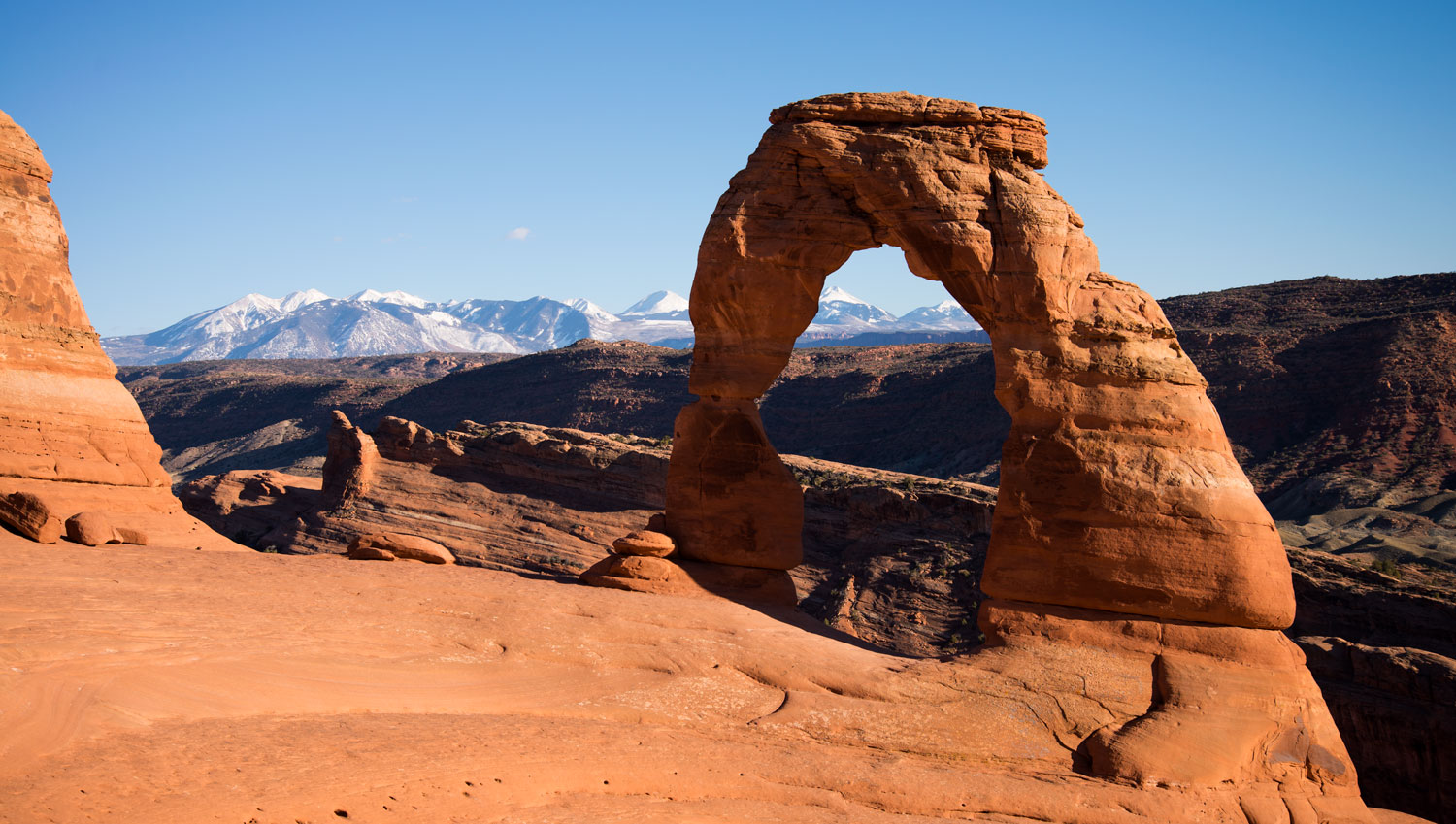For the Love of Arches
Photos by Forrest Anderson
Arches National Park in southeastern Utah is being loved to death.
Since October 2020, visitor numbers at the park have climbed as much as 70% in some months compared with previous years, according to the National Park Service.
At Delicate Arch, one of the park’s best photo opps, it’s not unusual to see lines of 100 people waiting to take a photo of themselves with the arch.
The park, which receives an average of 1.3 million visitors annually, was grappling with crowd management and traffic problems before the pandemic. From 1960 to 2020, annual visitation to Arches and nearby Canyonlands national parks rose by more than 2,000%, from about 72,000 to 1.75 million people. The past nine months have been the park’s busiest since it became a national park in 1971. This summer, it has had record numbers of visitors despite a blistering heat wave.
Arches National Park has had to close its only entrance gate by 8 a.m. on most days this summer because the parking lots are full and trails in the park are at capacity. Closures were intended only for busy holiday weekends before the pandemic, but the park has had to close for up to five hours almost every day since March.
Before the pandemic, there were suggestions that the park go to a timed entry system where people would purchase tickets on-line for specific times. The idea was shelved because business owners in the town of Moab near the park feared that such a system would reduce the number of visitors and they would lose revenue. A 2018 study indicated that the loss to the local economy of a timed ticket system could be as high as $22 million annually.
However, this year’s tsunami of visitors has revived the idea. The most popular national parks have a huge impact on local economies in general, and Arches is no exception. Moab is dependent on tourism, so normally the local sentiment is that the more visitors the merrier. However, the town has been so inundated by visitors that business owners have become concerned that they will stop coming because of local inability to meet their demand for services and that the visitors could damage the park’s natural resources.

Some local officials also have doubts about the 2018 study, as the town of Estes Park, Colorado, saw an increase in its sales tax after Rocky Mountain National Park implemented a reservation system because people would go to shops and restaurants in Estes Park while waiting for their reserved time to go to the park. Local officials have asked that the National Park Service implement a reservation system for Arches by Labor Day. Other proposed solutions include using shuttles to ferry visitors through the park and building a new road that could reduce traffic congestion in the park’s canyons.
The surge in visitors has come as the park service is struggling to hire enough workers to staff entry gates, collect fees, work as interpretative park rangers and do law enforcement. The park service has had budget problems for years and hasn’t had a permanent director confirmed by the Senate in more than four years.
Housing and rental prices have soared in the Moab area because of remote workers and second-home buyers. This means that park service employees can’t afford to live in the town. As a result, it is hard to hire enough people to staff the park and nearby Bureau of Land Management lands. Some employees live an hour away in the town of Monticello, so they have to commute.
Hotels and restaurants are short on staff in the area partly because workers are in high demand during the pandemic recovery and partly because tens of thousands of foreign student workers who often work in popular parks are still unable to enter the United States because of the pandemic. Wages have gone up and some employers are offering free or discounted housing to attract employees.
Once the large crowds of visitors are inside the park, park personnel are grappling with the fact that many are first-time visitors who are ill-prepared for the park’s conditions or uninformed about its mission of environmental conservation.
The park’s purpose is to protect the extraordinary arches, natural bridges, natural windows, spires, balanced rocks and other geological, historic and scientific features of the park as well as to give people an opportunity to experience them in their natural settings. The park service also tries to protect people from mishaps in the wild.
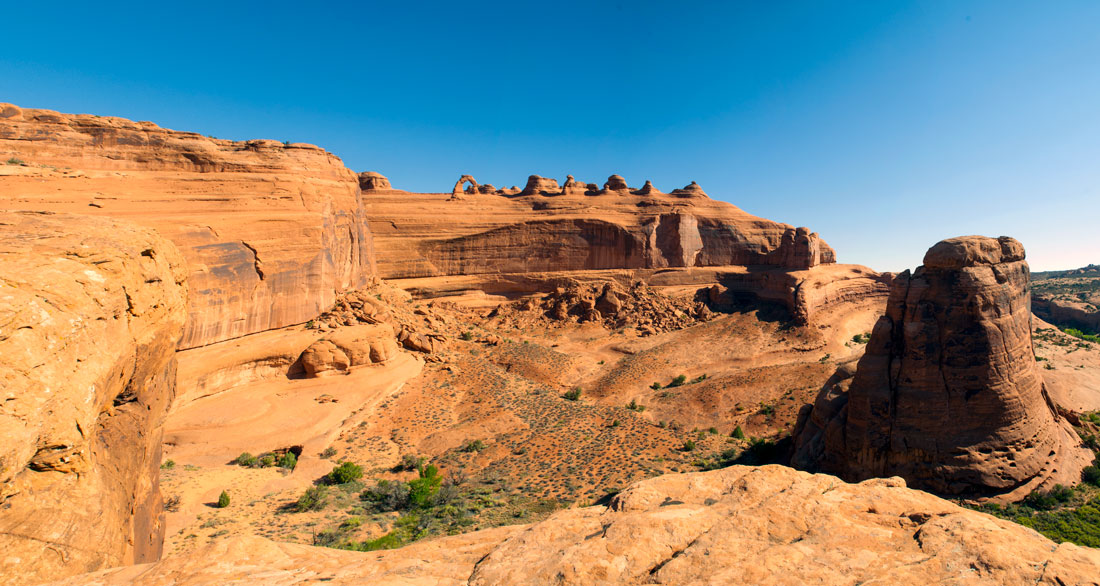
Many people who have never camped before don’t understand what protecting the land means. Many have taken dogs on trails where they aren’t allowed or used drones which are prohibited. Many visitors have thrown garbage on the ground and are walking off trails and stepping on the park’s fragile cryptobiotic soil. There have been problems with graffiti.
Rangers normally monitor and prevent such behavior, but they are overwhelmed with the numbers of visitors. As a result, they don’t have time to provide the environmental education needed to protect the park.
An important part of the park service’s environmental protection is educating visitors on being prepared with enough water (a gallon per person per day in the summer), wearing the right shoes, not touching or walking on archaeological and natural sites, and taking trash out of the parks. Visitors also need to be warned to stay away from sandstone fins during high winds or when the fins are slick from rain as rocks can fall from them.
Visitors need to be educated to book lodging in advance, as hotels and campgrounds in and around the parks are nearly fully booked through Labor Day. Campground reservations across the national park system are up 73% compared with 2019. Arches has just one campground and two walk-in camping areas, so most people who visit the park must seek accommodations outside of the park.
A reservation system for tickets could help with education services , because it would spread visitors out during the day so that employees weren’t swamped at any one time. Visitors also could enter the park early in the morning or late at night without a reservation.
Tourists have expressed concerns that on-line tickets sell out quickly and it is difficult to get reservations for multiple people before they sell out. They also have noted that people come from a long way away and may not realize that they need reservations to get into the park. At Rocky Mountain National Park, angry visitors started a petition to ditch the reservation system when it went into effect.
Arches isn’t alone – Yellowstone National Park, Grand Teton National Park, and Great Smoky Mountains National Park have seen record visitation each month this year. Big spikes in visitation are mostly at the most popular 12 to 15 national parks, so the park service is encouraging visitors to explore the more than 400 lesser-known national parks, seashores and historical sites instead.
Why is Arches National Park on so many people’s travel bucket list? The park is home to some of the most striking red rock formations in the world and is the world’s largest concentraton of sandstone arches. There are more than 2,000 known arches in the park, as well as stunning canyons and rock formations formed by wind, water and temperature changes over 65 million years.

The park lies above an underground salt bed thousands of feet thick in some places that was deposited in the Paradox basin of the Colorado Plateau 300 million years ago when a sea evaporated. Over millions of years, the salt bed was covered with debris eroded from the Uncompahgre Uplift to the northeast. During the Early Jurassic era about 200 million years ago, the area was desert, and a vast area called the Navajo Sandstone was deposited in the area. The Entrada Sandstone was deposited on top of it about 140 million years ago. Most of that has eroded away. The sandstone arches of the area developed mostly within the Entrada formation.
The weight of this cover caused the salt bed below it to liquefy and thrust up layers of rock into salt domes.
As this subsurface movement of salt shaped the landscape, erosion removed younger rock layers from the surface. Exposed sandstone expanded, creating more fractures into which water seeped. In winter, snowmelt pools in fractures and other cavities, then froze and expanded, breaking off chunks of sandstone. With each storm, small recesses grew larger until they turned into arches. Arches also emerged when potholes near cliff edges grew deeper until they wore through cliff walls below them.
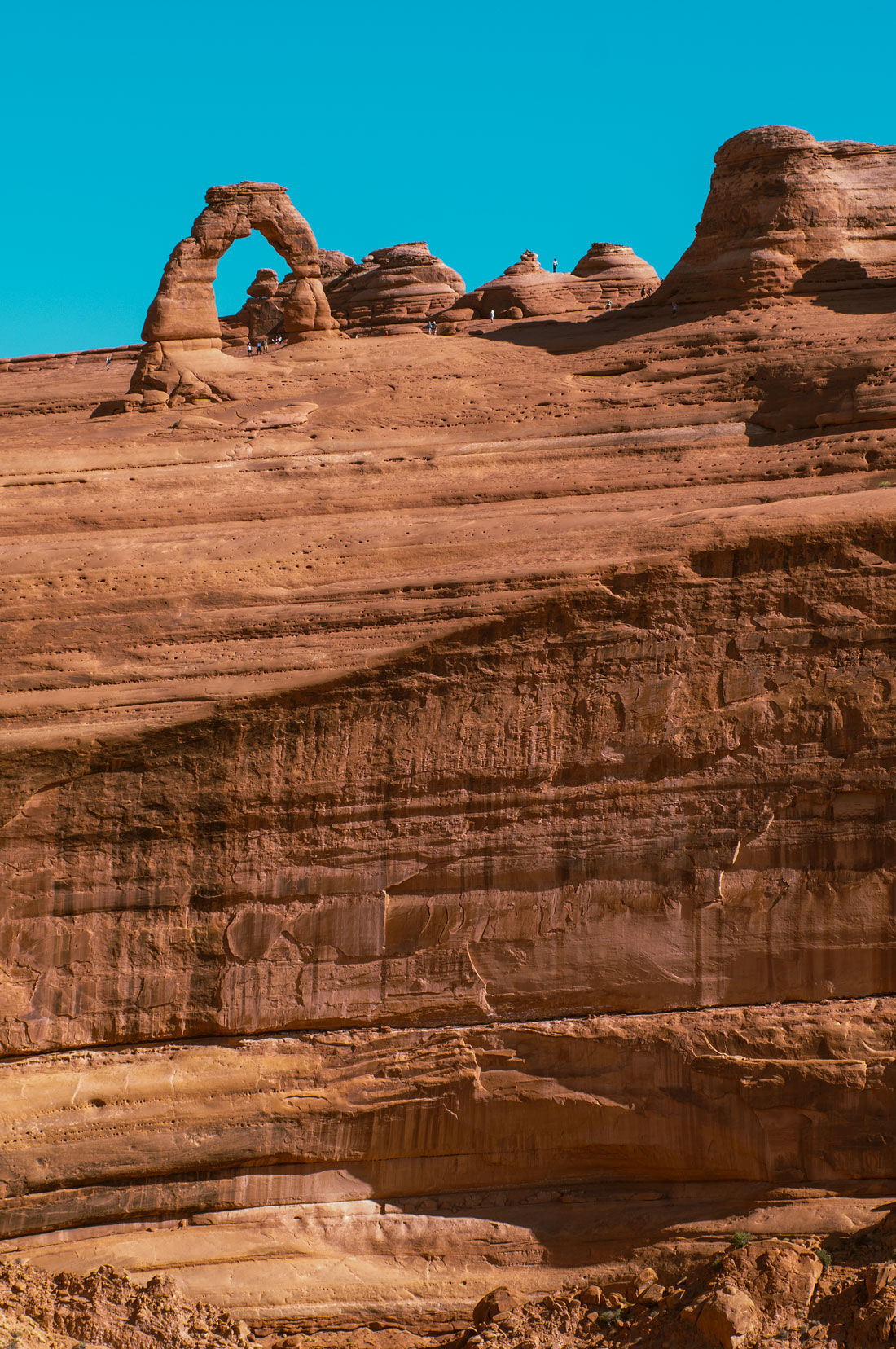
These natural forces continue today, widening arches until they eventually will collapse, Wall Arch fell in 2008. However, the erosion and fracturing is slow, and most of the arches will still be standing for many years.
Paleo-Indians in the area from about 10,000 to 7,800 BC may have been the earliest people to see the arches. When the climate warmed and dried about 9,000 years ago, large mammals and their hunters moved to higher habitats. People who stayed lived in small groups and depended on gathering and traveling for food. Archaeologists have found spear points, campsites and stone quarries in the area. Native Americans used the park area for thousands of years, hunting game animals, foraging for wild plant foods, and using the stone for tools and weapons. People of the late Fremont culture left behind rock pictographs in the park.
The first white explorers came looking for mineral wealth, followed by ranchers with sheep and cattle herds. .John Wesley Wolfe, a disabled Civil War veteran, and his son, Fred, settled in the area in the late 1800s. Their weathered log cabin, root cellar and corral remain.

The semiarid climate, scarce unpredictable rainfall, lack of deep freezing and lack of plant debris in the park have created a fragile soil crust that is threatened by the large influx of visitors. The soil is alive and is essential to the park’s ecosystem. Known as cryptobiotic crust, the soil surface is a combinaton of lichen, mosses, green algae, fungi and cyanobacteria. Cyanobacteria, one of the world’s oldest living organisms, helps form the soil and generates oxygen. It is dormant during dry seasons, but moves when wet. This crust is essential in protecting the surface from erosion.
Stepping on it, driving a vehicle over it, or riding a bicycle on it kills or badly damages it, and it does not recover quickly or easil, if ever. When tracks are produced in continuous strips, such as by vehicles of bicycles, those areas are highly vulnerable to wind and water erosion. Channels are created along the tracks that lead to further erosion. Wind carries pieces of pulverized crust away, preventing it from reattaching and covering other nearby crusts. This can kill them, as crustal organisms need light to photosynthesize. Previously stable areas can become shifting sand dunes.
Damaged areas never recover or take five to seven years to return. It can take up to half a century of cyanobacterial growth for soil nutrients to be repaired, and lichens and moss can take even longer to recover. Previously stable areas can become shifting sand dunes in just a few years.

Visitors should avoid damaging these crusts by always driving on designated roads, respecting road closures, and only passing when the road is wide enough without driving over roadside vegetation. They should always hike on designated trails or durable surfaces such as rocks or sandy washes.
The park gets just 8-10 inches of rain annually, so its animals and plants have adapted to dry conditions. Some bury themselves in the soil most of the time, coming out only after rain to mate and lay eggs. Burrowing owls build their nests and raise their young in abandoned burrows of prairie dogs and other animals.
When rain does come, it is in flash floods that can cause closure of the park. People also can be trapped in canyons by flash floods. Flash floods are a particular danger during the monsoon season from July to September.
Fire is at the opposite end of the spectrum of threats to the park. This year’s hot dry weather prompted officials to impose tight fire restrictions in the park and other public lands in southeastern Utah. Campfires, fireworks, most shootin, and smoking except in an enclosed vehicle or building, developed recreation site or paved, barren or cleared area have been prohibited.
This year, a fire southeast of Moab spread from an abandoned campfire. It consumed some 9,000 acres, required between 300-500 firefighters and has cost $8.3 million to fight.
Hot weather and drought exacerbate fire danger and spread. Climate change and its resulting long-term drought have arrived in the park and other areas of the Colorado plateau, which is experiencing higher temperatures, less water and increasing desertification.
This is challenging the National Park Service as the parks are experiencing drought beyond that of historical records. There are predictions that moisture deficits in the park area will be 22-30 percent greater than those ever recorded during the next 50-80 years. Drought in the later 21st century is likely to exceed the most severe megadrought periods when indigenous cultures in the area experienced severe disruption, scientists say.
The increasing aridification is the most significant resource challenge the park is facing.
Options for dealing with climate change are few. Species will have to adapt, migrate or die. The park service can use several strategies - resist the drought by watering stressed vegetation, accept climate change and watch how it plays out, or direct the changes in ways that achieve desired outcomes such as restoring wildlife with species adapted to drier conditions. Some species and resources inevitably will be saved, while others will be lost.
The park service and other government and tribal entities in the area have been working for several years on assessing the climate change, identifying ways to adapt and selecting the best options. The goal has been toincorporate climate change strategies into all aspects of day-to-day management of the park.
Arches National Park can exceed 100 temperatures in the summer, so the best times to visit are April through May and September through October. The park often is crowded during these times in addition to the summer peak. Winter is the least crowded time although occasional snow and ice can make trails slippery.
One of the reasons that the large influx of visitors is problematic at Arches is that it has few back country areas. Bike paths, and bicycles are not allowed on hiking trails or off established roads in the park. Climbing is allowed for experienced climbers, but not on arches, Balanced Rock and a few other locations. Climbing on sandstone also can be dangerous because it is crumbly. Nearly all climbing routes are closed from March through August to allow raptors to breed without being disrupted.
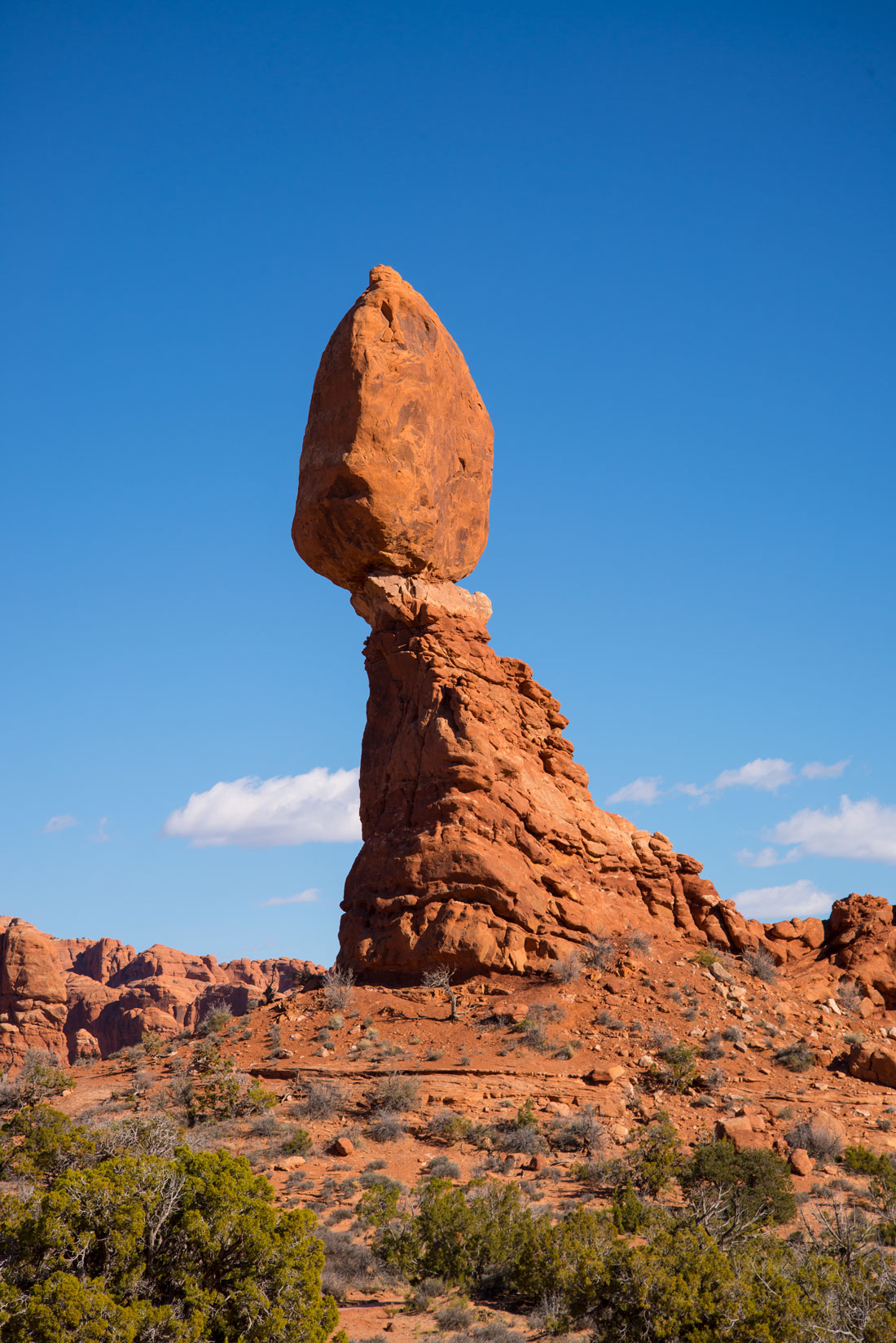
The main crowding problem in Arches is vehicles, as the road system is limited and traffic can slow to a crawl at the park’s main attractions.
Here are tips for being a responsible tourist at Arches:
Come prepared with food, water and enough gas in your car. Bring refillable water bottles rather than disposable plastic ones.
Leave behind no trace that you have been in the park. Take trash, including organic items such as orange peels, cherry stones and banana peels with you. Don’t throw chewing gum or cigarette butts anywhere.
Don’t pick wildflowers or collect rocks.
Check on and abide by current fire restrictions and flash flood warnings.
Never feed wild animals, including birds, and keep food in covered containers at all times.
Don’t stray off trails.
Don’t canyoneer unless you know what you are doing.
Lock your car and protect your belongings from theft.
Check out these related items

The River That Keeps on Giving
The mammoth Colorado River is the lifeblood of the southwest United States, supplying water and power for cities and agriculture.
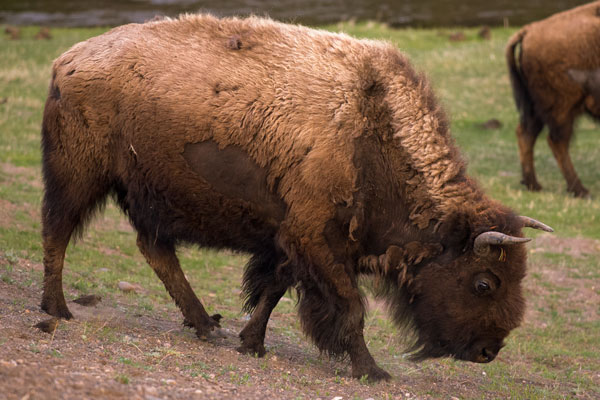
Yellowstone Roars Back To Life
As the pandemic wanes in the United States, the crowds have returned to Yellowstone National Park.
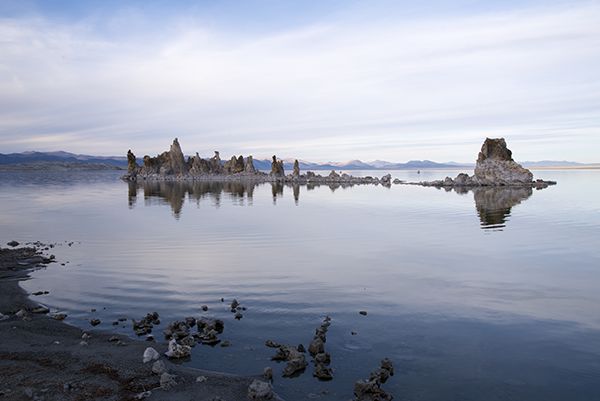
The Road Less Traveled
There's an alternative to the standard boring I-15 southern and I-80 northern routes across Nevada.
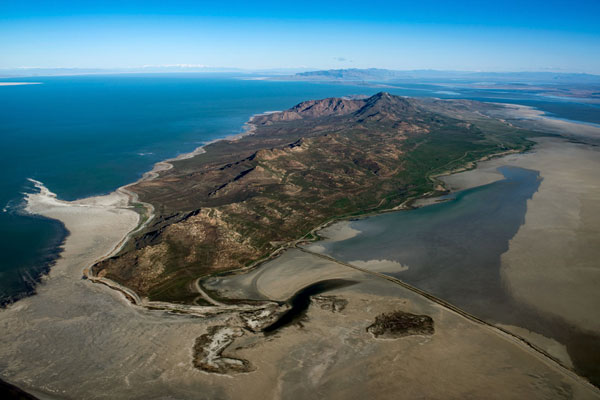
Saving the Great Salt Lake
The Great Salt Lake, along with other saline lakes worldwide, is drying out. Preserving and restoring won't come cheap.
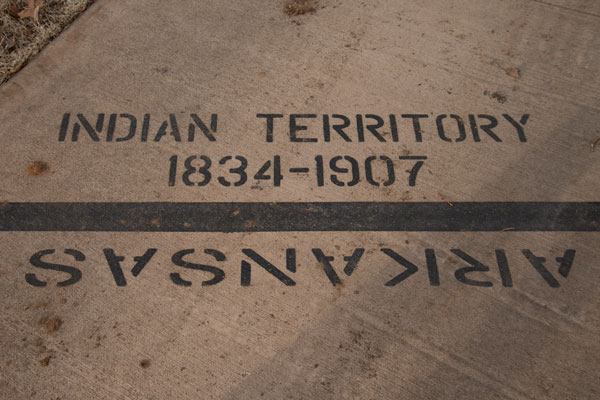
Nations Within a Nation
The first Native American to become U.S. interior secretary must deal with a fraught history of government-Native American relations.
